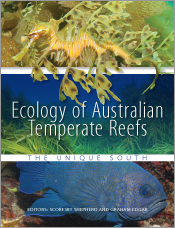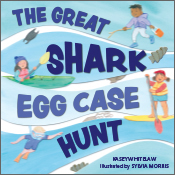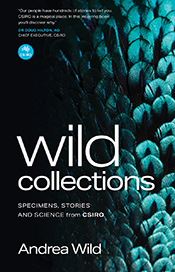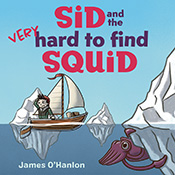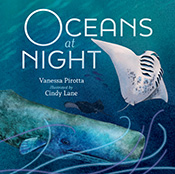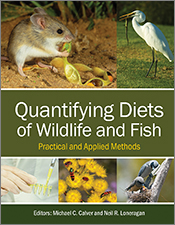Ecology of Australian Temperate Reefs

The Unique South
Edited by: Scoresby A Shepherd, Graham EdgarDescribes the ecology of important elements of southern Australian sub-tidal reef flora and fauna, and the underlying ecological principles.
Ecology of Australian Temperate Reefs presents the current state of knowledge of the ecology of important elements of southern Australian sub-tidal reef flora and fauna, and the underlying ecological principles. + Full description
Preliminary chapters describe the geological origin, oceanography and biogeography of southern Australia, including the transitional temperate regions toward the Abrolhos Islands in the west and to Sydney in the east. The book then explains the origin and evolution of the flora and fauna at geological time scales as Australia separated from Antarctica; the oceanography of the region, including principal currents, and interactions with on-shelf waters; and the ecology of particular species or species groups at different trophic levels, starting with algae, then the ecological principles on which communities are organised. Finally, conservation and management issues are discussed.
Ecology of Australian Temperate Reefs is well illustrated with line drawings, figures and colour photographs showing the many species covered, and will be a much valued reference for biologists, undergraduates, and those interested and concerned with reef life and its natural history.
2014 Whitley Award Commendation for Marine Ecology.
- Short descriptionNews
No longer available in a print edition.
Reviews
"I think readers will love this book! Professors will love it because it will make the concepts and principles of temperate marine ecology come alive. Students will love it because it will make them want to learn more. Ordinary folk with an interest in the ocean will love it because it will give them not only the background to understand it more thoroughly, but also because it will give them stories to surprise their friends, e.g., "Did you know that wrasses live in harems with 20-30 females and one or two males, and when a male dies, a female changes sex to become a male?"
Lisa-Ann Gershwin, Biological Conservation 196, April 2016
"... an excellent read for any biologist about to holiday on the Australian coast"
Ian Lancaster, The Bulletin, British Ecological Society, June 2014
"This book is an absolute must for those interested in the ecology of temperate reefs in Australia."
Prof. Gary Kendrick, Australian Marine Sciences Association, April 2014
"Valuable for readers interested in comparative marine ecological studies."
L. T. Spencer, Choice 52(2), October 2014
"Ecology of Australia’s Temperate Reefs is a superbly presented and well-written exposé of Australia’s temperate reef biota and
their life histories and links to the physical and historical ocean, an inspiring text for undergraduate and more advanced researchers."
David J Booth, Frontiers of Biogeography 6(3), 2014
"This wonderfully written book explores and justifies the global significance of the Unique South and in my opinion is a compulsory
read for any temperate marine ecologist."
Dan Smale, Marine Biology Research 11(1), 2015
"An invaluable compendium of information about a part of Australia that hosts the bulk of our endemic marine fauna. It will surely be a catalyst for an upsurge in studies and an inspiration to scientists and managers to work towards preservation of this extraordinary region. Many thanks to the author/editors and their colleagues for this timely work."
Carden C. Wallace, Australasian Journal of Environmental Management 24(1), 2017
Details
ePDF | October 2013ISBN: 9781486300105
Publisher: CSIRO Publishing
Available from eRetailers
ePUB | October 2013
ISBN: 9781486300112
Publisher: CSIRO Publishing
Available from eRetailers
Features
- Describes the current state of knowledge of the ecology of southern Australian sub-tidal reef flora and fauna and the underlying ecological principles
- Includes accounts of geological origin, biogeography and the oceanography of the region, including principal currents, and interactions with on-shelf waters
- Presents the ecology of species and species groups at different trophic levels, for both better-known and obscure groups
- Well illustrated with line drawings, figures and colour plates to illustrate the many species discussed
- Will be a valuable reference for anyone interested in the ecology and health of coastal waters
Contents
AcknowledgementsContributors
Reviewers and others who assisted in various ways
Preface
Introduction
Colour plates
Part 1 – The Southern Ocean from its Beginnings till now
Chapter 1. Geological History and Climate Change in Southern Australia
Chapter 2. Oceanography and Marine Climate of Southern Australia
Chapter 3. Biogeography and Biodiversity
Part 2. The Algae
Chapter 4. The Kelps
Chapter 5. Large Brown Algae: The Fucoids
Chapter 6. Ecology of Non-Geniculate Coralline Algae
Chapter 7. Middle and Lower Stratum Algae
Part 3. The Marine Invertebrates
Chapter 8. Ecology of Meiofauna and Macrofauna
Chapter 9. The Molluscan Megafauna: Herbivores, Carnivores and Filter-Feeders
Chapter 10. Cephalopods
Chapter 11. Echinoderms
Chapter 12. Effects of Sea Urchins on Benthic Habitats
Chapter 13. Sessile Fauna: Sponges, Ascidians, and Bryozoans
Chapter 14. Cnidarians (Hydroids, Anemones, and Corals) and Ctenophores
Chapter 15. Larger Crustaceans and Sea Spiders
Part 4. The Marine Vertebrates and Mammals
Chapter 16. Bottom-Feeding Fishes
Chapter 17. Planktivores and Large Reef-Associated Carnivores
Chapter 18: Marine Mammals
Part 5. Marine Ecosystems and their Conservation
Chapter 19. Food Webs
Chapter 20. Conservation and Management
Authors
Scoresby A Shepherd AO has worked for 40 years in fisheries and ecology. He has published 128 papers or chapters in books, and is the author or editor of numerous books such as Natural History of Gulf St Vincent, Marine Invertebrates of Southern Australia, Abalone of the World and Biology of Seagrasses. He was appointed an Officer of the Order of Australia in 2006, and was awarded both the Australian Marine Sciences Association Jubilee Medal and the Royal Society of South Australia Sir Joseph Verco Medal.Graham J Edgar is a pre-eminent authority on reef ecology, with over 100 papers on benthic algae, invertebrates, seagrasses, Marine Protected Areas and human impacts on marine environment. He is the author of two books, Australian Marine Life and Australian Marine Habitats, both receiving Whitley awards for best general zoology book. He has received the Mia Tegner Award and Queens fellowship in Marine Science, and has held many international appointments, including Director Marine Research, Charles Darwin Research Station, Galapagos Is (2000–02).
Contributors: Joyce Richardson (Brachiopods), Jan Watson (Hydrozoans), the late Dr Patricia Kott (Ascidians); Craig Sanderson (Giant Kelp), Sabine Daume (Encrusting Coralline Algae), Craig Proctor (Blue-ringed Octopus), Darren James (succession in shallow reef habitats), Adrienne Grant (Zoanthids and Stony Corals), Carolina Zagal (Stauromedusae), DA Staples (Pycnogonids), Brian Saunders (Zebra Fish), Simon Bryars (ambush predators).

